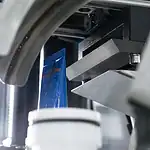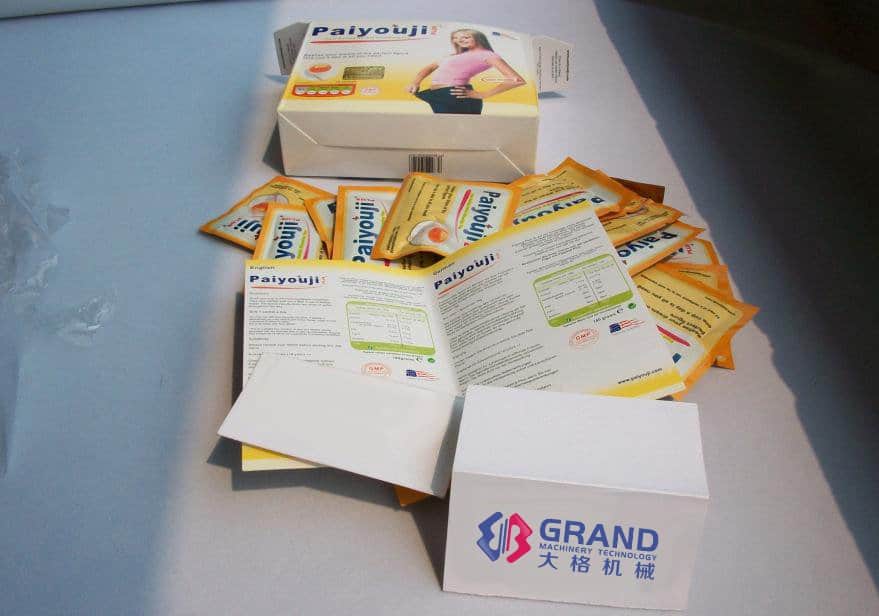
The Heart of Modern Medicine: Capsule and Tablet Manufacturing

Grand Tube Filling and Sealing Machine Tech vs. Standard Sealers
How an Automatic Liquid Filling Machine (Reagent filling and sealing) Works?
In the high-stakes worlds of diagnostics, pharmaceuticals, and biotechnology, precision isn't just a goal—it's the absolute standard. Every diagnostic test, every scientific experiment, and every medical treatment relies on the accuracy of its components. At the heart of producing these critical materials is the automatic liquid filling machine, a marvel of engineering that ensures millions of vials, tubes, and bottles are filled with perfect consistency, speed, and safety.

This article will pull back the curtain on the sophisticated process behind a Reagent filling and sealing machine. By observing the operational flow, we'll explore each critical stage, from unscrambling and filling to capping and sealing. We will also touch upon how leading reagent filling machine manufacturers like Grandpackmachine are pushing the boundaries of what's possible, delivering the precision that modern science demands.
The Challenge: Why Automation is Non-Negotiable

Reagents are often sensitive, valuable, and used in minute quantities where the slightest error can invalidate results. Manual or semi-automatic filling is slow, prone to human error, introduces a higher risk of contamination, and is simply not viable for large-scale production. An automatic liquid filling machine solves these challenges by creating a controlled, repeatable, and highly efficient environment.
From a small-scale bottle-filling machine for boutique labs to massive industrial lines, the core principles of automation are the same: guarantee accuracy, ensure sterility, and maximize throughput.
A Step-by-Step Journey Through the Reagent Filling Line
As seen in the production video, a Reagent tube filling machine is not a single device but an integrated production line. Let's break down the mechanical ballet step by step.
Step 1: Unscrambling and Feeding – Bringing Order to Chaos
Production begins with thousands of empty reagent tubes or vials. These are typically loaded into a large hopper of a vibratory bowl feeder or an unscrambler. Through controlled vibrations and precisely designed spiral tracks, this device orients each tube correctly and feeds them, one by one, onto the main conveyor track in an orderly, single-file line. This initial stage is crucial for preventing jams and ensuring a smooth, continuous flow for the subsequent stages.
Step 2: Positioning and Indexing – Precision Placement
Once on the main line, the reagent tubes are moved by a conveyor system. However, for filling and capping to occur, they must be perfectly stationary and aligned. This is achieved through an indexing mechanism, often a star wheel or a linear walking beam system. This mechanism precisely groups the tubes and moves them intermittently from one station to the next. Sensors, often optical or laser-based, verify that each tube is present and correctly positioned before the filling cycle begins. This meticulous positioning is the foundation of accurate filling.
Step 3: The Heart of the Process – Liquid Filling

This is the most critical stage. A bank of high-precision filling nozzles descends in unison to dispense the reagent into the waiting tubes. The technology behind the filling can vary based on the liquid's properties (viscosity, foaming tendency) and the required fill volume:
- Peristaltic Pumps: Ideal for sterile applications and small-scale bottle-filling machines, as the liquid only touches the inside of a disposable, medical-grade tube. This prevents cross-contamination and simplifies cleaning.
- Piston Pumps: Highly accurate for a wide range of viscosities. A piston retracts to draw a precise volume of liquid into a cylinder and then extends to dispense it.
- Time/Pressure Filling: A simpler method where the liquid is dispensed for a pre-set amount of time under constant pressure.
In the video, you can see a large array of nozzles, indicating a high-throughput machine. Each nozzle dispenses the same volume, a paramount consistency. As studies published in prestigious journals like Science and Cell have shown, reproducibility is the cornerstone of scientific validity. An experiment's results are only meaningful if they can be replicated. This principle extends to the manufacturing of the tools used in that science. A Reagent filling and sealing machine from a top-tier manufacturer like Grandpackmachine embodies this principle, ensuring that the millionth vial is as perfectly filled as the first, thus guaranteeing the integrity of the downstream diagnostic or research application.

Step 4: Cap Feeding and Placement
Immediately after filling, the tubes are indexed to the capping station. Similar to the tube feeder, a vibratory bowl unscrambles and orients the caps (visible in the background at 0:02 and in a separate feeding unit in other setups). A pick-and-place mechanism, often using vacuum suction or mechanical grippers, picks up each cap and places it onto the filled tube. Sensors ensure a cap is present and correctly seated before the final sealing.
Step 5: Sealing/Capping – Securing the Product
With the cap in place, the final sealing occurs. For screw caps, this involves a series of rotating chucks that descend and apply a precise amount of torque to tighten the cap. This torque is carefully calibrated—too loose, and the seal can leak; too tight, and the cap can be damaged or difficult for the end-user to open. For press-on caps, a simple downward pressure is applied. This stage secures the product, protects it from contamination, and ensures its shelf life.
Step 6: Ejection and Collection – The Finished Product
Finally, the filled and sealed reagent tubes are indexed to the end of the line, where they are pushed onto a collection tray or a further conveyor for labeling, boxing, and packaging. Advanced systems may include integrated quality control stations with vision systems to automatically inspect fill levels, cap integrity, and reject any faulty units.
The Grandpackmachine Difference: Engineering Excellence
What separates an adequate machine from an industry-leading one? The answer lies in the details—the quality of materials, the precision of the mechanics, and the intelligence of the control system. As a premier reagent filling machine manufacturer, Grandpackmachine builds its equipment based on several core principles:
- Superior Construction: Using high-grade stainless steel (like 316L for contact parts) ensures durability, corrosion resistance, and compliance with GMP (Good Manufacturing Practices) standards. The robust frames and meticulous wiring seen in the video are indicative of a machine built for longevity and reliability.
- Precision Mechanics: The seamless, high-speed movement of every component is a testament to superior design and manufacturing tolerances. There is no room for error when operating at hundreds of units per minute.
- Intelligent Control: Modern machines are powered by sophisticated Programmable Logic Controller (PLC) systems, which feature intuitive touch-screen Human-Machine Interfaces (HMIs). This enables easy setup, recipe management for various products, real-time monitoring, and precise control over every variable, from fill volume to capping torque.
In essence, the operational elegance of a Grandpackmachine line reflects a deep understanding of the pharmaceutical and diagnostic industries' needs. It's a commitment to providing not just a machine, but a reliable, precise, and efficient solution that empowers scientific progress.




